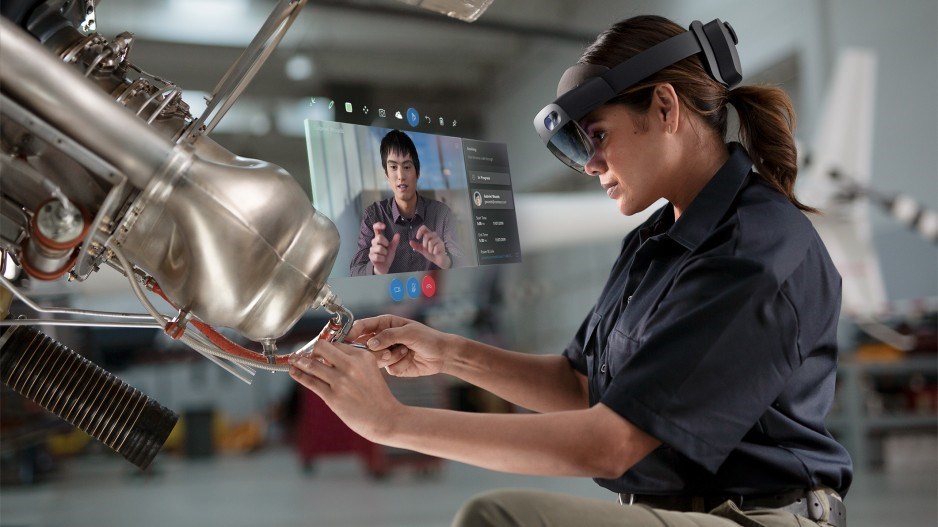It wasn’t a typical meeting between engineers and review board members overseeing the $900 million remediation project for Giant Mine near Yellowknife.
Data charts and 2D renderings of complex mining sites often dominate meetings where experts address 237,000 tonnes of arsenic trioxide waste stored below the abandoned gold mine.
But donning Microsoft Corp.’s (Nasdaq: MSFT) HoloLens headsets – devices that project 3D digital images into one’s field of view as if they were holograms – injected a different energy to the affair.
“They were sort of crouched on the ground and looking up at the different designs, and they were seeing things in the model that they themselves hadn’t seen in the plans or the drawings,” recalled Matt Lato, a senior geotechnical engineer at Vancouver-based BGC Engineering Inc.
For nearly three years, Lato and his firm have been working on the Ada software platform, which takes objects ranging from engineering designs to terrain and survey data, then digests the information in a way that visualizes applied earth science data in 3D through the HoloLens.
Suddenly Giant Mine is no longer paper charts in a boardroom but is rendered as a 3D model floating in the air in front of the HoloLens user.
“It allows people to view the data from a different standpoint and a different perspective that’s much more natural to them,” said Lato.
“And then also to view it at different scales, so we have models where … it’s a one-to-one scale. So people stand on the landscape and can walk around it. And then we have future landscapes so people can see what something will look like in the future once the engineering is done, which is really unique to any platform.”
While the Ada platform was originally conceived to help BGC communicate complex data sets to clients through visuals, the engineering firm is debating internally about licensing the software.
The platform has thus far been used in about 35 projects.
Meanwhile, in late February Microsoft debuted the latest iteration of its device, the HoloLens 2, at the Mobile World Congress in Barcelona.
BGC was among the companies highlighted during the presentation for the new HoloLens.
Unlike other devices in the virtual reality, augmented reality and mixed reality space, the HoloLens is being targeted mainly at the enterprise market.
BGC’s earlier work on the Ada platform was enough to land the engineering firm a spot in the technology giant’s Mixed Reality Partner Program.
Microsoft uses the program to offer its own expertise to third parties developing HoloLens applications.
The first Canadian organization selected, Port Coquitlam’s Finger Food Studios, ended up receiving 20 headsets in 2016.
Last fall another B.C. firm, Victoria’s Llamazoo, was also accepted into the program.
But BGC remains an outlier among representation on the West Coast.
“The big difference in our mind, and what caught Microsoft’s attention, is BGC is a domain expert in geotechnical engineering and applied earth science,” Lato said, adding that his firm had to build a dedicated team from the ground up that has since grown based on client demand.
“So we have a very purpose-driven application for our software.… And not that there’s anything wrong with a software engineering firm developing software, but the idea that it’s really focused on what experts in the geotech and civil engineering worlds needed – it’s been very productive.”




